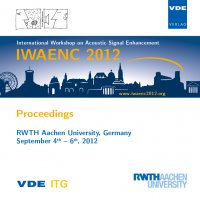A Morphological Approach to Single-Channel Wind-Noise Suppression
Konferenz: IWAENC 2012 - International Workshop on Acoustic Signal Enhancement
04.09.2012-06.09.2012 in Aachen, Germany
Tagungsband: IWAENC 2012
Seiten: 4Sprache: EnglischTyp: PDF
Persönliche VDE-Mitglieder erhalten auf diesen Artikel 10% Rabatt
Autoren:
Hofmann, Christian; Kellermann, Walter (University of Erlangen-Nuremberg, Multimedia Communications and Signal Processing, Cauerstr. 7, 91058 Erlangen, Germany)
Wolff, Tobias; Buck, Markus; Haulick, Tim (Nuance Communications Aachen GmbH, Acoustic Speech Enhancement, Soeflinger Str. 100, 89077 Ulm, Germany)
Inhalt:
Today, a variety of technical devices deploy spoken language processing technology. In many practical use cases, not only stationary ambient noises but non-stationary interferences, such as wind noise, degrade their performance. If only one microphone is available, regular noise reduction schemes are capable of suppressing stationary interferences. Wind noises, however, are highly non-stationary and may be annoying in a hands-free application, for instance. To suppress such interferences in a speech signal, we propose to consider the signal spectrogram as an image and to exploit neighborhood relations in the time-frequency plane, hence morphological features. To this end, wind-noise-typical energy patterns are extracted by morphological operations employing both the signal spectrogram and its temporal derivative. The resulting estimate of the interference power spectral density is then used for speech enhancement in a subbandprocessing framework. Distance measures and informal listening tests indicate the effectiveness of the proposed method compared to classical noise-reduction schemes in the presence of non-stationary interferences of wind noise. Index Terms — Speech enhancement, wind-noise reduction, morphological processing, single-channel, non-stationary, instationary, noise, interference


